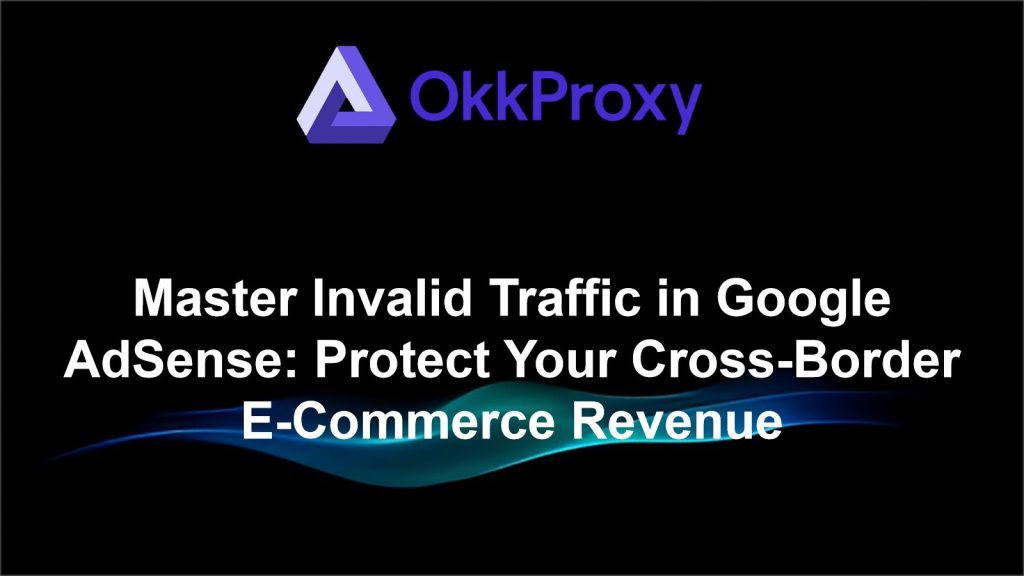In the current booming landscape of cross-border e-commerce, advertising has become a crucial means of market expansion. However, many merchants using Google AdSense often encounter issues with invalid traffic, which not only affects revenue but can also lead to account restrictions or even suspension. This article delves into the root causes of invalid traffic and provides systematic solutions to help cross-border e-commerce practitioners effectively mitigate risks and safeguard both the health of their advertising campaigns and their earnings.
I. What Beginners Must Know: The Impact of Invalid Traffic on Cross-Border E-Commerce
Invalid traffic refers to ad clicks not generated by genuine user interest, which can lead to account throttling, revenue freezes, or even bans. This article will systematically analyze the core risks in cross-border e-commerce advertising, from the root causes of violations to their solutions.
II. Four Root Causes of Invalid Traffic in Google AdSense
1. Manual Operation Risks
- Self-Clicks: The publisher or team members clicking their own ads.
- Incentivized Clicks: Encouraging clicks through giveaways, misleading button designs (e.g., disguising ads as close buttons), etc.
- Ad Automation Tool Abuse: Using bots, click automation software, or auto-refresh scripts to artificially inflate traffic.
2. Technical Flaws & Accidental Click Design
- Mobile ad spacing < 300px causing accidental clicks.
- Not using the official AdMob SDK, leading to system misjudgment.
- No visual distinction between ads and functional buttons (e.g., transparent backgrounds).
3. Traffic Source Pollution
- Purchasing traffic from incentivized click platforms (showing obvious repeated visits from single IPs).
- Black-hat SEO referrals (channels with a bounce rate > 80%).
4. Account Anomalies or High Risk
Google’s Advertising Traffic Quality Guidelines explicitly prohibit forging user distribution via technical means. The following situations are flagged as high-risk by the system, and the associated ad traffic is deemed invalid:
- Residential IP Reuse: ≥3 accounts (even under different entities) logging in from the same static IP will be flagged as linked, invalidating traffic data.
- Data Center IP Characteristics: Over 30% of account access originates from data center IPs (e.g., AWS, Alibaba Cloud).
- Proxy IP Pollution: Using shared proxy pool IPs that have been used by other non-compliant accounts.
III. Systematic Solutions for Google AdSense Invalid Traffic
(I) Technical Compliance Management
- Ad Placement Standards:
- Use the official AdMob SDK for ad integration.
- Ensure mobile ad spacing ≥ 300px (check using developer tools).
- Disable page auto-refresh functionality.
- Accidental Click Prevention Design:
- Add a 2px border or color block to distinguish ad areas.
- Disable all buttons for the first 3 seconds of video ads.
- Traffic Purification Tools:
- Deploy Google Analytics 4 to monitor suspicious IP ranges (trigger alerts if a single IP accounts for >20% of clicks).
- Implement bot detection tools like Cloudflare.
(II) Operational Risk Avoidance
- Internal Operation Prohibitions:
- Strictly prohibit clicking your own ads (use the ad preview tool for testing).
- Remove incentivized click clauses from partner agreements.
- Traffic Source Management:
- Prioritize long-tail keywords to acquire organic traffic (e.g., “waterproof Bluetooth headphones 2024”).
- Require 90-day traffic quality reports for new channels (focus on channels with bounce rate < 40%).
- Account Security Management:
- Use tools like AdsPower fingerprint browser paired with IPFoxy’s Static Residential IPs to reduce invalid traffic risks. IPFoxy’s vast pool of clean residential IPs significantly lowers the risk of being flagged for IP pollution. Configuring them within a fingerprint browser provides an isolated, independent environment for each store, aiding secure multi-account management and preventing platform penalties for account association that invalidate traffic data.
(III) Data Monitoring & Remediation
- Identifying Anomalous Traffic:
- Monitor three core metrics: Click-Through Rate (CTR), Bounce Rate, and Pages Per Session.
- Preparing Appeal Materials:
- GA4 anomalous traffic comparison charts (annotating data before and after fixes).
- Server logs + IP block records (highlighted in Excel).
- Steps for Restricting Lifted:
- First Restriction: Submit a remediation report within 72 hours for automatic system review.
- Second Restriction: Requires a third-party audit report (e.g., from WhiteOps).
IV. Long-Term Prevention Framework for Google AdSense Invalid Traffic
- Front-end Defense Layer:
- Quarterly review of ad placement technical specifications.
- Update accidental click prevention designs bi-annually.
- Data Monitoring Layer:
- Set up GA4 real-time alert dashboards (focus on mobile traffic).
- Generate a monthly Traffic Health Report.
- Audit Reinforcement Layer:
- Annual third-party traffic audit (e.g., using Sizmek/IAS).
- Maintain a channel traffic blacklist database.
By implementing this three-layer defense framework, your traffic quality and revenue potential are significantly enhanced!
Conclusion
In summary, cross-border e-commerce practitioners using Google AdSense must take the issue of invalid traffic seriously. By deeply understanding its root causes and implementing the systematic solutions outlined above, you can effectively mitigate risks, ensure account security, and achieve stable revenue growth. Thank you for reading. We welcome all cross-border players to share and discuss in the comments section!
